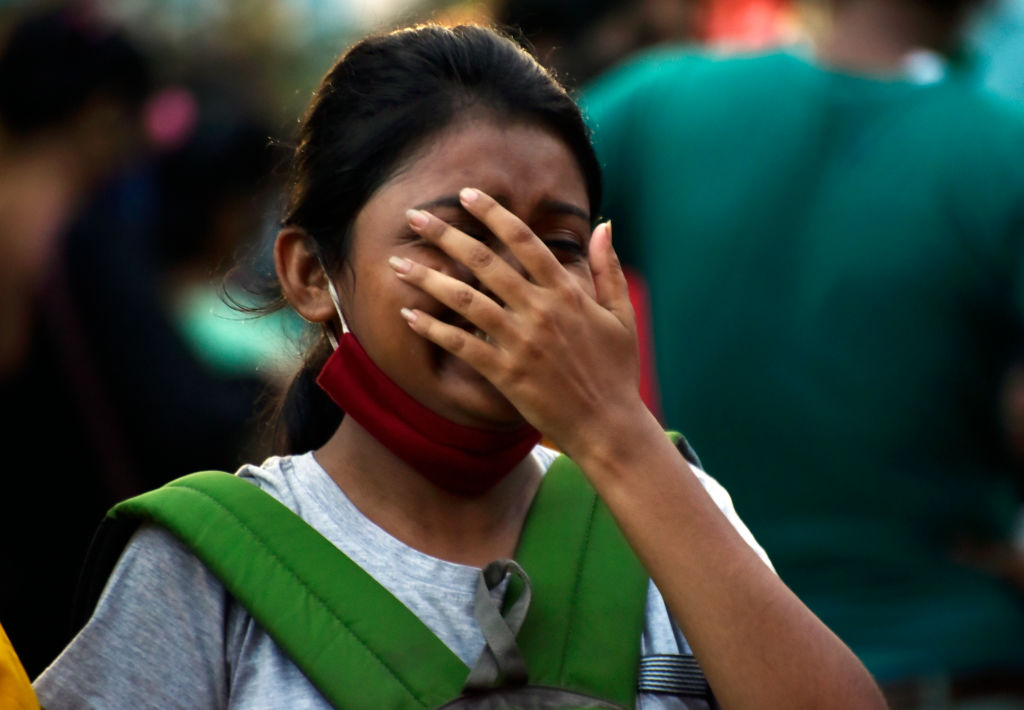The first child in India created and conceived solely to save the life of a sibling has been born, reports the BBC, raising bioethical questions. Kavya Solanki was able to save the life of her brother, making the experiment a success — and potentially inspiring the practice of “savior siblings” to grow.
Sahdev and Aparna Solanki both have thalassemia minor, which can cause symptoms similar to anemia. But their son, Abhijit, was born with thalessemia major, the most severe form of the disorder, which can be life-threatening. It is caused when the beta globin genes are missing, which leads to less hemoglobin — which carries oxygen — and fewer red blood cells than normal.
“Every 20-22 days, he needed 350ml to 400ml blood. By the age of six, he’d had 80 transfusions,” Sahdev told the BBC. “Abhijit was born after my first daughter. We were a happy family. He was 10 months old when we learnt that he was thalassaemic. We were devastated. He was weak, his immune system was compromised and he often became ill. And when I found out that there was no cure for his illness, my grief doubled.”
The Solanki family soon learned that a bone marrow transplant could be a cure, but no one in his family was a match. It was then that he learned of so-called “savior siblings” — babies born specifically to donate cells, blood, or organs to their older siblings.
Sahdev contacted Dr. Manish Banker, a fertility specialist, and they created a baby without thalassemia, using pre-implantation genetic diagnosis. According to the BBC:
The technology used for Kavya’s birth is called pre-implantation genetic diagnosis – it allows embryos to be screened for disease-causing genes and has been used in India for a few years now, but it’s the first time it’s been used to create a saviour sibling.
Dr Banker says it took him more than six months to create the embryo, screen it and match it with Abhijit’s. Once they had the perfect match, the foetus was planted in the mother’s womb.
It is unclear how many preborn children were created, and then destroyed, in the process.
READ: Expert: The controversial gene editing of preborn children must be stopped
“After Kavya’s birth, we had to wait another 16 to 18 months so that her weight could increase to 10-12kg,” Banker told the BBC. “The bone marrow transplant was done in March. Then we waited for a few months to see whether the recipient had accepted the transplant before announcing it.”
The transplant was ultimately successful, and Sahdev says that Abhijit has been declared cured. “We love her even more than our other children,” he said. “She’s not just our child, she’s also our family’s saviour. We’ll be grateful to her forever.”
Sex-selective abortion has resulted in millions of missing girls in India due to a cultural preference for sons over daughters. When a girl is unwanted, she is killed — yet, when a son’s life needs to be saved, a girl can be created to cure him, even if it puts her own life at risk. This kind of gendercide is disturbing, particularly considering it is so rarely recognized, and even more rarely condemned.
Kavya is not the first person created solely for the purpose of saving a sibling’s life. Adam Nash was also conceived using pre-implantation genetic diagnosis so he could donate cord blood to his sister, and is believed to be the world’s first savior sibling. Nash’s story created international headlines, and was ultimately the inspiration for the novel-turned-movie “My Sister’s Keeper.” Another savior sibling, Max Matthews, was also created in 2010 in the United Kingdom.
Ethicists have frowned on the idea of creating people solely to save other people. “We have to look at the parents’ motivation,” Professor John Evans, an expert on the ethics of gene editing, said in an interview with the BBC. “Did you have this child only for this reason to create a perfect genetic match for your [sick] child? If you did, then you’re putting at risk a child without their consent… It’s a very slippery slope and it’s very hard to put barriers on it. It’s one thing to create a saviour sibling for bone marrow, but how do you stop there? How do you not go on to modifying genes in existing humans?”
“Like” Live Action News on Facebook for more pro-life news and commentary!







